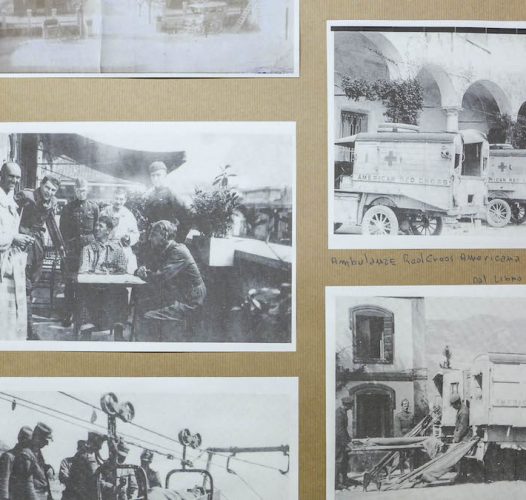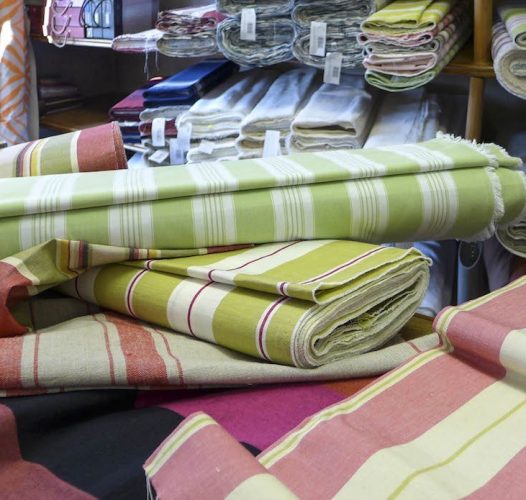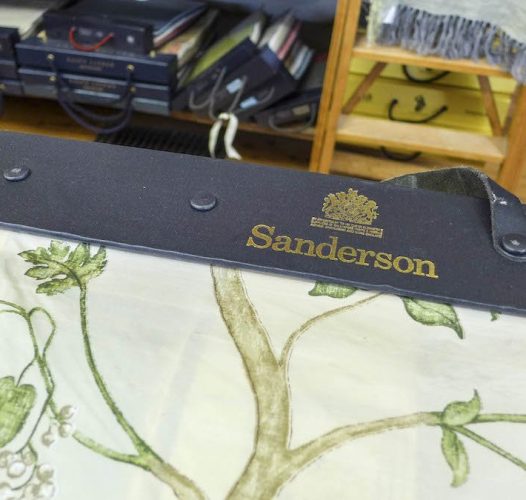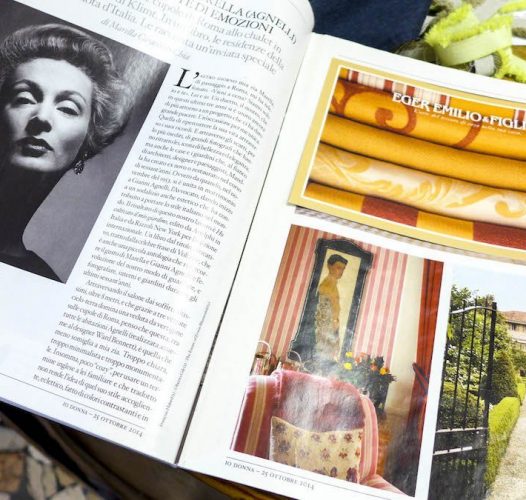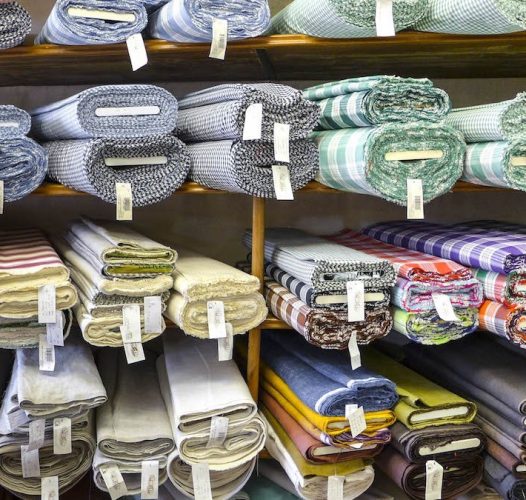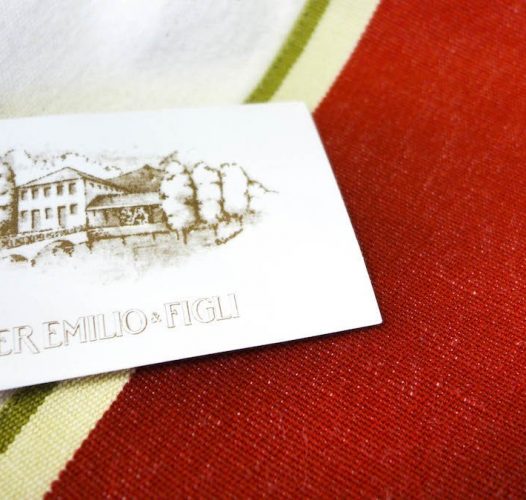
There is a detail that characterizes some of the most beautiful restaurants and mansions in Veneto, from Osteria al Castelletto da Clemi to the Corte di Follina: they are the striped fabrics of Eger Emilio & Figli, so different from any others, so elegant, so “Venetian”.
Let’s discover the history of the famous “Mussolente stripe, an icon of textile art, named after the town in the province of Vicenza where it was invented, or rather “reinvented,” and why it has become a cult, a distinguishing element in the textile furnishings of the world’s most luxurious homes.

The history of striped “workwear” fabrics
Striped cotton fabrics have a truly ancient origin, used since the Middle Ages in the Mediterranean basin as workwear thanks to their durability, achieved by weaving natural cotton and linen (or hemp) yarns alternating with colored fibers. The initial color used was indigo blue, derived from the Indigofera Tinctoria plant, a dye used because, in addition to being the cheapest, it also had good insulating properties (which is also why jeans are blue!).
Later also used for other applications where durability was the primary characteristic, such as covering mattresses, pillowcases, etc., the revival of these fabrics began in the United States (where they were called ticking, from the Greek theka, meaning covering), a country to which the textile industry had been “imported” from Europe in the 18th century, and striped fabrics became a symbol of utility work and the colonial era.
In the 20th century, thanks to some famous interior designers who revolutionized the concept of interior decoration, including Sister Parish (named after the woman who decorated the White House during the Kennedy era), the trend of country chic decor was born. Taking inspiration from the fabrics typical of American colonial homes, it would forever popularize stripes, until then confined to the bedroom, making them a must-have for decorating living areas as well.

From utility workers to international jet set icons
The bon ton country chic trend started spreading, and so striped fabrics were also beginning to be offered in Italy for living room furnishings. Among the manufacturers, Eger of Mussolente stands out. Its history began in the 19th century in distant Bohemia, when Francesco Eger moved to Veneto for love and founded his textile company. Since then, the business has always been synonymous with the art of the highest quality textiles, so much so that in the 1960s, with the boom in second homes, Eger fabrics were found in the homes of the Venetian Dolce Vita, primarily in Cortina, where architect Luigi Vietti was among the regulars.
It was he who was called to “design” the legendary Costa Smeralda by Karim Aga Khan IV, the famous prince of the Persian dynasty. Having fallen in love with the wild yet wonderful Sardinia, at a time when the tourism industry was in its infancy, he decided, together with a group of entrepreneurs, to create a hub for the international jet set. Vietti designed the Porto Cervo Village and numerous villas, drawing inspiration from local elements and materials. But when it came to choosing fabrics, Sardinian craftsmanship offered no compelling alternatives. Thus, one of the architect’s collaborators, also a frequent visitor to Cortina, chose Eger fabrics, already a client, for the furnishings of the Costa Smeralda project.
In the golden triangle of Porto Cervo, Milan, and Cortina, word of mouth spread, and Eger fabrics became a distinctive feature, characterizing the homes of all the celebrities who frequented those locations—the Onassises, the Kennedys, the Agnellis—as well as luxury hotels and top restaurants.
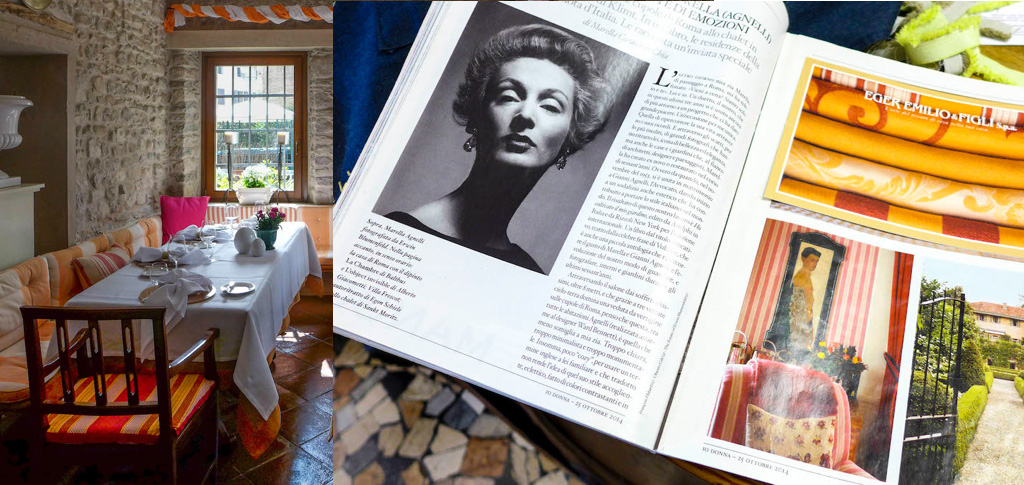
Eger, today as then, is an icon of good taste and quality
Today, as then, the original Mussolente striped fabrics can only be found at Eger, in the historic location that has retained all its 1930s charm, with its enormous wooden counters displaying dozens of spools of fabric in every color.
Here, advised with old-world professionalism by the third generation of the Eger family, a bastion of good taste and tradition, you can find, in addition to the iconic striped tablecloths, the most sought-after furnishing brands, such as the English Sanderson, and fabrics that Eger has made from the finest natural-fiber Egyptian cottons: pleasant to the touch, durable, with a perfect crease, truly worthy of a regal residence.
Useful Info
Eger Emilio & Figli
V. Eger 20
36065 Mussolente, Vicenza
eger@eger.it
Tel. +39 0424 878787






